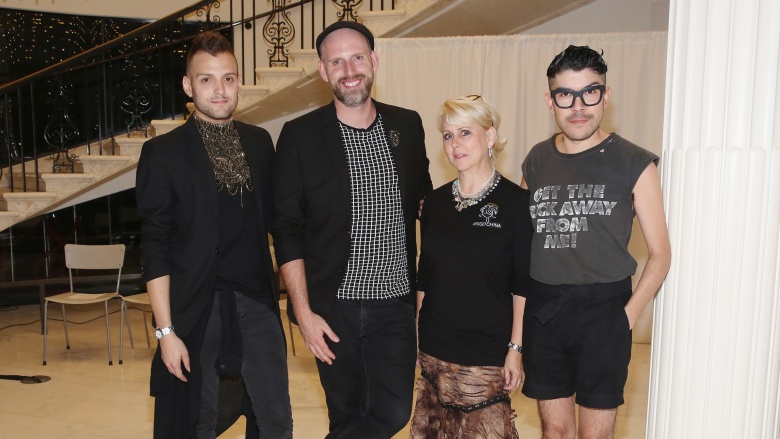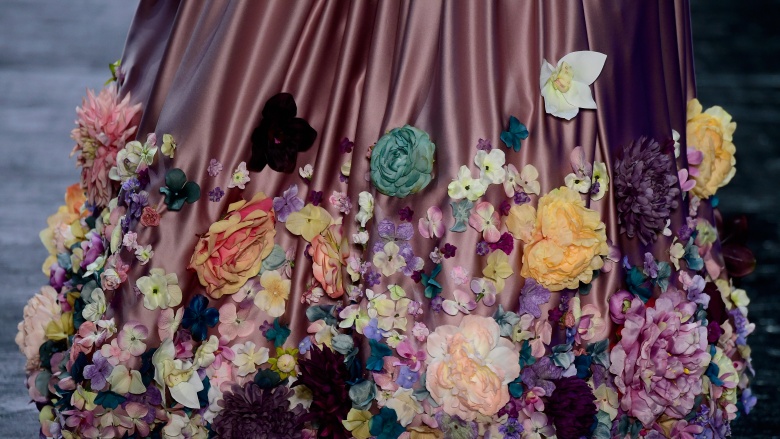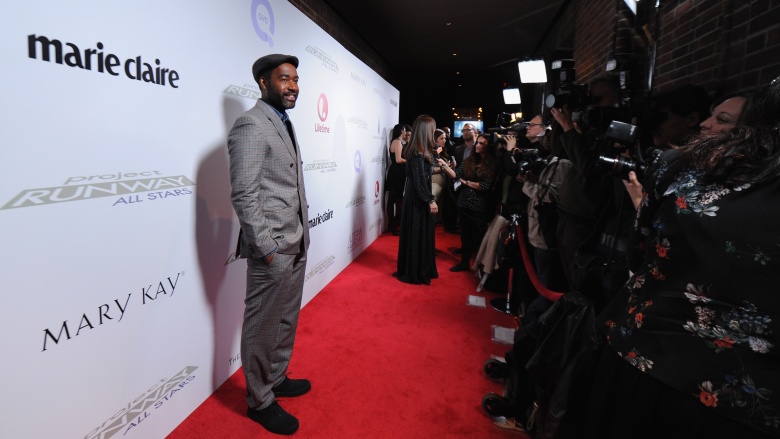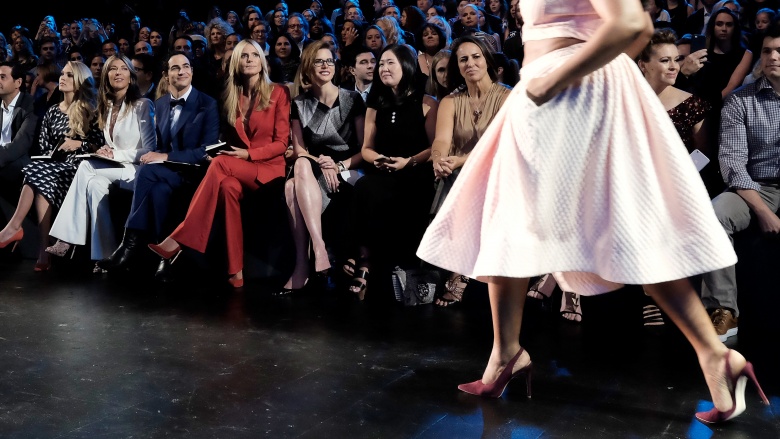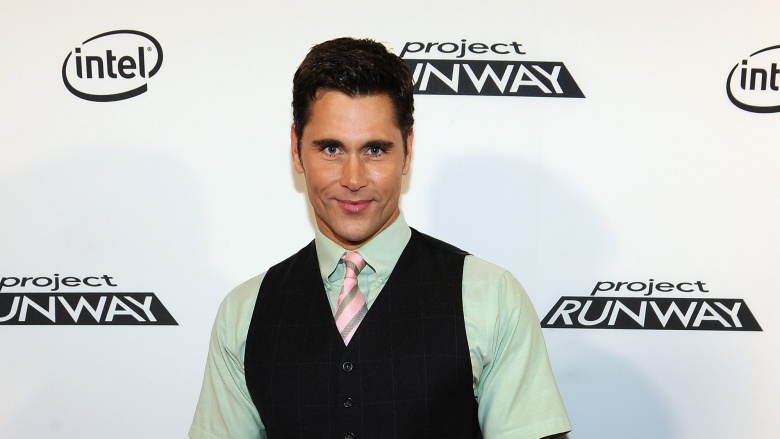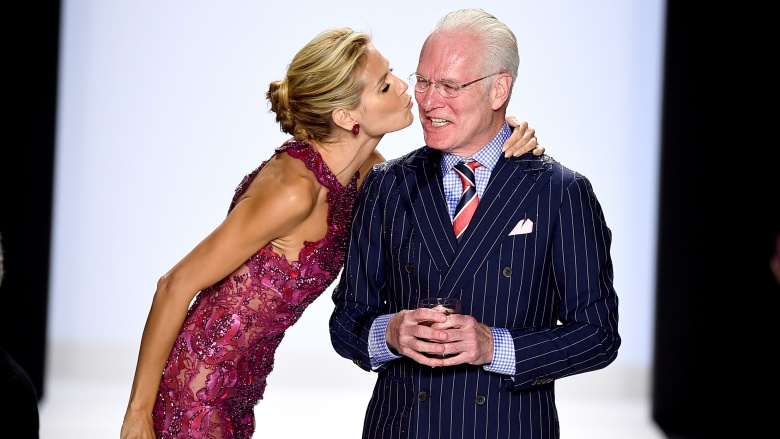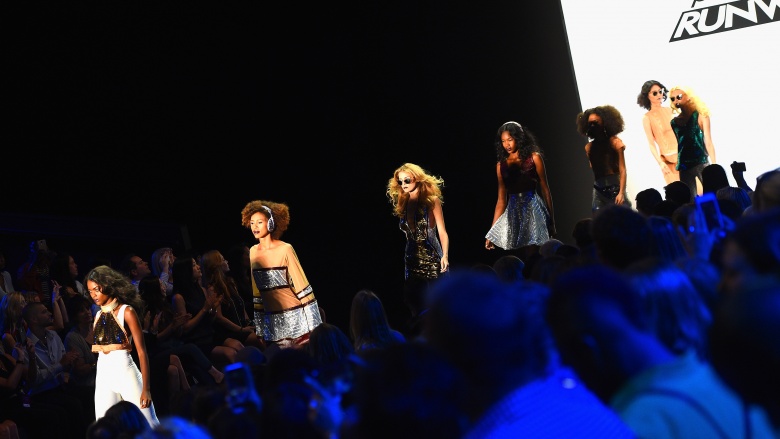The Untold Truth Of Project Runway
In 2004, the world first fell in love with Heidi Klum, Tim Gunn and all the fashion magic made on Project Runway, the reality show on which aspiring fashion designers compete for a chance to break into the industry. Now, hundreds of contestants, thousands of scraps of fabric, and dozens of New York Fashion Week debuts later, this show has continued to introduce the world to new and ultra-talented fashion designers, not to mention let us all in on all the drama that takes place on both on and off the runway.
But is everything that happens on Project Runway actually real? Let's take a look at what really goes on behind the scenes of TV's most fashionable reality show.
The competition is even more difficult than it looks
If you thought creating an evening gown from scratch in less than 24 hours was the most challenging part of competing on Project Runway, think again. According to Sara Rea, one of the show's producers, the designers "usually get up about 5 a.m., if not earlier." After getting ready, receiving their challenges, sketching, and going to Mood Fabrics, they return to the workroom and work until 11 p.m. or midnight. The process is so intense, in fact, Rea admits they implement mandatory lunch breaks. "They'll get so focused that they won't eat," she said in an interview with The A.V. Club. "That's not good for them or us or anyone. We just do rotations so that everyone eats at different times within the same hour block."
Add in being followed around by a camera for 18 hours a day, and that's when the real fun begins. Diana Eng, who competed on the show's 2005-2006 season, told New York magazine she was often awakened by the camera crew standing over her. "One morning they scared me so bad I jumped and screamed. They said that wasn't good, so I had to pretend to wake up again."
The show gets VIP treatment at Mood
If you've ever thought about stopping at Mood while perusing for fabric in New York City's Fashion District (because that's a thing most of us do, right?), don't be surprised if you see a big ol' "closed" sign on the door. When Project Runway is around, the popular fabric emporium shuts its doors on mere mortals like us. "Mood closes for us," show producer Sara Rea explained in an interview. "We have a very close, long-term working relationship with them and we make sure we're posted on their schedule so they don't close too early. It's very, very kind, and it works out well for us for obvious reasons." Quite the sweet deal, indeed.
Contestants go off the grid during competition
Imagine a world with no Facebook, Netflix, or text messages. Hard to believe? Not if you've ever been a contestant on Project Runway. According to New York magazine, the designers are banned from all media during filming. This means no Internet, no TV, and no cell phones. They can't even listen to music!
And on the rare occasion that they do communicate with loved ones back home (which we sometimes get to see play out on camera), non-disclosure agreements prevent the designers from spilling anything about what's happening on the show to friends and family. It's no wonder there are so many emotional breakdowns.
Everyone's a winner
Well, not everyone. But a lot more than the three finalists get to show at New York Fashion Week. In fact, Project Runway hosts its own runway show during the event, in which up to 10 of the season's designers have shown their work in front of a large crowd. The catch: no one (except the judges and contestants) knows who is actually a finalist until the show airs. This makes it more difficult for the media to find out any spoilers.
The show isn't an instant ticket to fame
While many designers who appear on Project Runway fulfill their lifelong dreams of showing at New York Fashion Week, being a Project Runway alum doesn't exactly equate to instant fame and success. "I can think of two, Christian Siriano and Michael Costello, who have had some level of national success," designer Jack Mackenroth, who appeared on the show's fourth season, said in an interview with Paper magazine. "Most people just go back to their old careers and continue to struggle. Fashion design is a cutthroat business. Well established designers go bankrupt right and left. And quite honestly, the fashion industry frowns on Project Runway and doesn't take the designers very seriously."
Tim Gunn didn't always get paid for appearing on the show
Like most reality show contestants, the designers of Project Runway aren't paid for appearing on the show. What is surprising: beloved mentor Tim Gunn wasn't actually paid anything for the show's first season, either. And by season two, he was only making $2,500 per episode, according to the New York Daily News. We certainly hope Mr. Gunn is getting his fair share by now.
Not everything is as it seems
You've probably seen enough reality TV to know that everything that happens on camera isn't exactly, well, a reality. As it turns out, Project Runway is no exception.
"The show is a sham," said one former contestant, season 4's Jack Mackenroth. "The judging is totally fake and they basically decide who they want to eliminate and edit the footage to make the viewer agree. But the work was real and the other designers I met were amazing. I'm still friends with many of them."
Daniel Esquivel, one of the finalists on season 11, said in an interview with Culture Map Austin: "To me, everybody else was portrayed a certain way where [producers] pushed it to the extreme — but some people were the same, naturally extreme. Everyone has the right to their own opinion, so I didn't really take to heart when people talked negatively of me."

